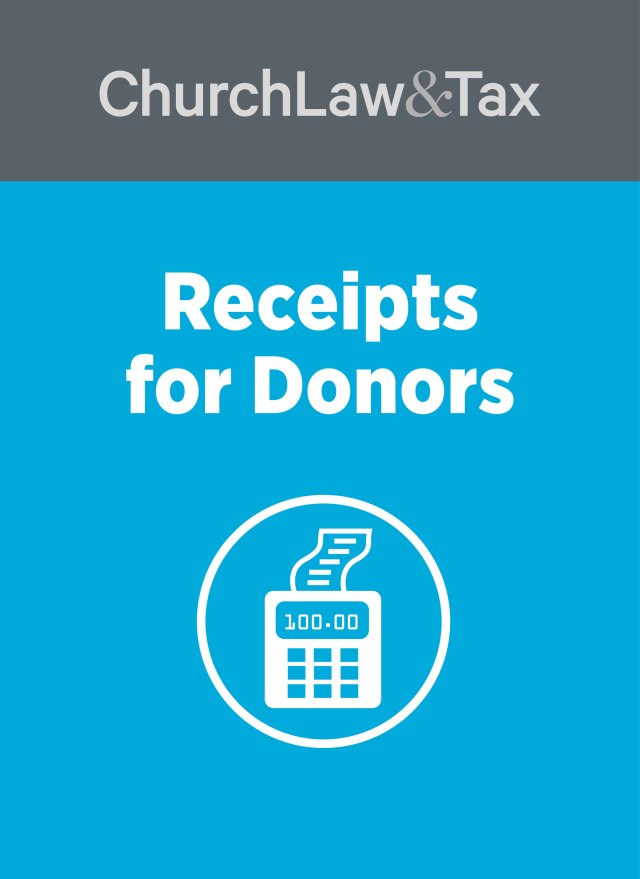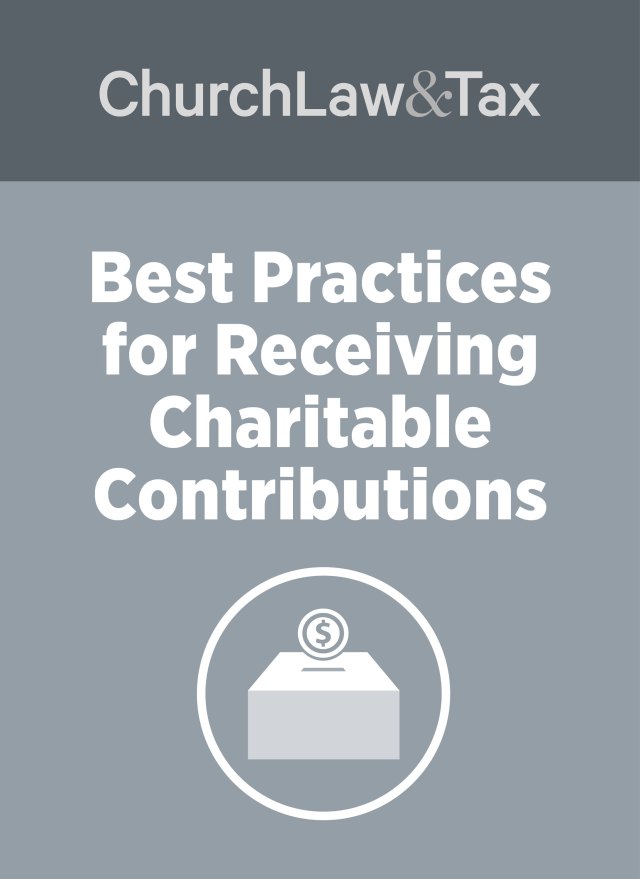Editor’s note: Treasurers and other church leaders continue to grapple with how the Tax Cuts & Jobs Act of 2017 affects their staff’s payroll, charitable giving, taxes, and other financial areas of their ministry. The following article will help you better understand how the Act does—and doesn’t—apply to your church. Specifically, it addresses areas related to donor giving and will help you guide employees as they seek to understand the new tax brackets, changes in deductions and tax credits, and other information pertinent to individual taxpayers.
The Tax Cuts and Jobs Act of 2017 amends the Internal Revenue Code to reduce tax rates and modify credits and deductions for individuals and businesses. With respect to individuals, the bill:
- Replaces the seven existing tax brackets (10 percent, 15 percent, 25 percent, 28 percent, 33 percent, 35 percent, and 39.6 percent) with seven new and lower brackets (10 percent, 12 percent, 22 percent, 24 percent, 32 percent, 35 percent, and 37 percent).
Tip: An employee’s tax liability is not computed by taking the top marginal tax rate times total income. Rather, tax is computed by multiplying income in each bracket times the applicable percentage. For additional information and guidance, along with tables that break down the income tax rates for 2018 for single persons and married persons filing jointly, see the introduction to the 2019 Church & Clergy Tax Guide.
- Temporarily increases (through 2025) the basic standard deduction to $24,000 for married individuals filing a joint return, $18,000 for head-of-household filers, and $12,000 for all other individuals.
- The significantly increased standard deduction will reduce the number of persons who are able to itemize deductions on Schedule A (Form 1040) from 30 percent to as few as 5 percent of all taxpayers. The result will be a significant decrease in the number of taxpayers who can claim a tax deduction for contributions they make to churches and other charities. Will the loss of a charitable contribution deduction by 95 percent of all taxpayers discourage them from contributing to their church or favorite charities? Possibly, but note the following:
1. Estimates of the impact of the new law on charitable giving differ widely.
2. IRS statistics demonstrate that the taxpayers who give the largest percentage of their income to charity are lower income individuals who claim the standard deduction and therefore receive no “benefit” in the form of an itemized deduction for making gifts to charity.
3. Some donors may be incentivized to give more to charity because of their concern over the potentially negative impact of the Act’s substantial increase in the standard deduction on charitable giving.
4. Perhaps more so than any other charitable donors, those who give to their church or other religious organization do so out of a desire to benefit the recipient rather than provide a tax break for themselves.
5. Should the substantial increase in the standard deduction result in a material decline in charitable giving, Congress will face increasing pressure from a wide array of prominent religious and secular charities to provide relief.
- A section 529 plan (also known as a “qualified tuition plan”) is a plan operated by a state or educational institution with tax advantages and potentially other incentives to make it easier to save for college and other post-secondary training for a designated beneficiary, such as a child or grandchild. The main tax advantage of a 529 plan is that earnings are not subject to federal tax and generally are not subject to state tax when used for the qualified education expenses of the designated beneficiary, such as tuition, fees, books, as well as room and board. The Tax Cuts and Jobs Act modifies section 529 plans to allow such plans to distribute not more than $10,000 in expenses for tuition incurred during the taxable year in connection with the enrollment or attendance of the designated beneficiary at a public, private, or religious elementary or secondary school. The new rules apply to distributions made after December 31, 2017.
- The Tax Cuts and Jobs Act repeals both the moving expense deduction, and the exclusion of employer reimbursements of moving expenses under an accountable arrangement—except in the case of a member of the Armed Forces of the United States on active duty who moves pursuant to a military order. This provision is effective for taxable years 2018 through 2025.
Note: As nonprofit CPA firm CapinCrouse noted this past fall, the IRS subsequently issued guidance indicating “employee reimbursements or payments an employer makes in 2018 for qualified moving expenses incurred in a prior year are not subject to federal income or employment taxes.” But the employee cannot have already deducted the expenses in a prior tax year.
- Under the Affordable Care Act (Obamacare) individuals must be covered by a health plan that provides at least minimum essential coverage or be subject to a tax (also referred to as a penalty) for failure to maintain the coverage (commonly referred to as the “individual mandate”). The Tax Cuts and Jobs Act reduced the amount of the ACA’s individual responsibility payment to zero with respect to health coverage status for months beginning after December 31, 2018.
- Under prior law, in determining taxable income, an individual reduced adjusted gross income (AGI) by any personal exemption deductions and either the applicable standard deduction or itemized deductions. Personal exemptions generally were allowed for the taxpayer, the taxpayer’s spouse, and any dependents. For 2017, the amount deductible for each personal exemption was $4,050. This amount was indexed annually for inflation, and would have been $4,150 for 2018. The Tax Cuts and Jobs Act of 2017 repeals the deduction for personal exemptions for taxable years 2018 through 2025.
- Under prior law, individuals could claim itemized deductions for certain miscellaneous expenses. Certain of these expenses were not deductible unless, in aggregate, they exceeded 2 percent of the taxpayer’s AGI. The Tax Cuts and Jobs Act suspends all miscellaneous itemized deductions that are subject to the 2-percent floor under present law. As a result, taxpayers may not claim these personal and business expense items as itemized deductions for the taxable years to which the suspension applies.
Tip: For additional guidance for handling the elimination of business expense deductions, along with a list of business expenses and deductions previously subject to the aggregate 2-percent floor, see “Responding to the Elimination of the Business Expense Deduction” in the September 2018 issue of Church Finance Today.
This provision is effective for taxable years 2018 through 2025 and will not apply thereafter unless extended by Congress.
Note: The IRS issued further guidance last fall with respect to this provision’s effects on business meals. When it comes to business meals, CapinCrouse said the IRS guidance “conclusively [states] meals are deductible. The rules for deducting meals have not changed unless the meal occurs in the context of entertainment, such as at a sporting event or a theater.”
- The Act temporarily increases the child tax credit to $2,000 per qualifying child (the maximum amount refundable may not exceed $1,400 per qualifying child). The credit is further modified to temporarily provide for a $500 nonrefundable credit for qualifying dependents other than qualifying children (such as aging parents). The provision generally retains the present-law definition of dependent.
Note: A tax credit is more valuable than a tax deduction, since it represents a dollar-for-dollar reduction in actual taxes rather than in taxable income. To illustrate, consider a taxpayer in the 22-percent tax bracket. A tax credit of $1,000 will reduce this person’s actual tax liability by $1,000. But a tax deduction will reduce taxable income, and the tax savings will depend on one’s tax bracket. This means that a person in the 22-percent tax bracket will see taxes reduced by 22 percent, or $220 in this example—much less valuable than a $1,000 credit that reduces taxes by $1,000.
- The Act allows taxpayers to claim an itemized deduction of up to $10,000 ($5,000 for a married taxpayer filing a separate return) for the aggregate of state and local property taxes and state and local income taxes (or sales taxes in lieu of income taxes) paid or accrued in the taxable year.
The new rules apply to taxable years 2018 through 2025.
- Under prior law, individuals could claim an itemized deduction for unreimbursed medical expenses, but only to the extent that such expenses exceeded 10 percent of AGI. The Tax Cuts and Jobs Act provided that, for taxable years 2017 and 2018, the threshold for deducting medical expenses would be 7.5 percent for all taxpayers. It went back to 10 percent in 2019.
- The alternative minimum tax (AMT) was enacted by Congress in 1969 in response to public outrage over the disclosure that 155 wealthy Americans paid no federal income taxes. From its beginnings a half century ago, affecting a handful of taxpayers, the AMT steadily captured more and more Americans. According to the Tax Foundation, 9.7 million Americans had to do the AMT calculations last year, and of these, 3.9 million owed additional taxes. The modifications contained in the Tax Cuts and Jobs Act of 2017 do not repeal the AMT, but ensure that very few taxpayers will be affected. Specifically, the Act temporarily increases both the exemption amount and the exemption amount phaseout thresholds for the individual AMT. The AMT exemption amount is increased to $109,400 for married taxpayers filing a joint return (half this amount for married taxpayers filing a separate return), and $70,300 for all other taxpayers. The phaseout thresholds are increased to $1 million for married taxpayers filing a joint return, and $500,000 for all other taxpayers (other than estates and trusts). These amounts are indexed for inflation.
- The Tax Cuts and Jobs Act doubles the estate and gift tax exemption for estates of decedents dying after 2017 and before 2026. This is accomplished by increasing the basic exclusion amount provided in section 2010(c)(3) of the tax code from $5 million to $10 million. The $10 million amount is indexed for inflation occurring after 2011, and for 2018 was $11.2 million. This amount can be doubled to $22.4 million for married couples who establish a marital deduction trust or qualified terminable interest property trust (QTIP trust).



